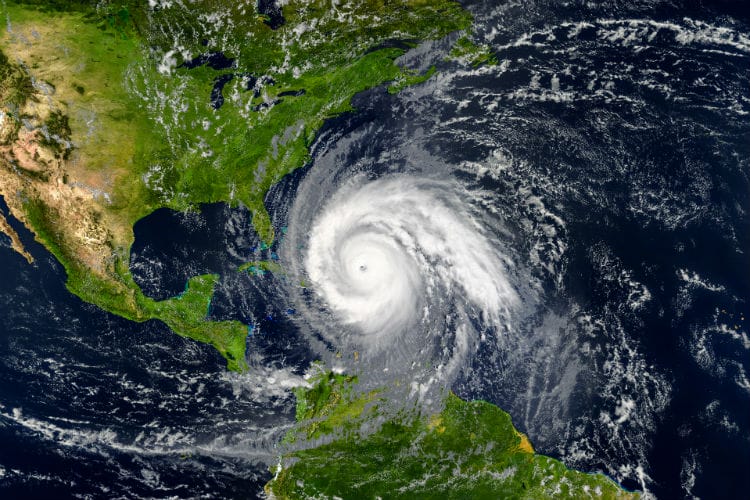Workplace Culture
How Business Leaders Should Respond During Crises
By Lauren Dixon
May. 1, 2019
When Hurricane Maria hit Puerto Rico on Sept. 20, 2017, HR consulting company ADP jumped into action to support its 36 employees living in the U.S. territory.
In the event of a major emergency that impacts its employees, ADP conducts associate safety and welfare checks, which involve an emergency notification system that reaches out to workers via call, text and email to ask if they need assistance, said Zona Walton, senior director of global business resiliency at ADP. Her team achieves 100 percent response in these instances, no matter what it takes. In the event of Hurricane Maria, though, ongoing power outages made these safety checks more challenging and involved search and rescue efforts.
“It can take us hours, it can take us days, and it can take us weeks,” she said. In Puerto Rico, it took several days to locate all employees around the island. “We’re continuing to support Puerto Rico, and we probably will for quite some time, just because of the devastation on the island and the needs of our associates we have there,” Walton said at the time of publication.
ADP provides whatever the workers need, particularly MREs (meals ready to eat), water, flashlights and batteries, but they can also support employees financially. Through its ADP Cares fund, its employees make donations, which are then matched by the company. These funds are available as donations to workers in crisis. Financial support and outreach from employees — particularly in the aftermath of Hurricane Maria — have been incredibly heartwarming, Walton said.
“We see that from one event to the next,” she said.
Balance a corporate statement between acknowledging the tragedy but not panicking.
Walton said her team has activated crisis management for 12 events between Aug. 1 and Nov. 2 of 2017. These events have included hurricanes, wildfires and terrorist attacks that could affect the safety of their employees. Her team had to account for about 8,800 ADP workers.
Walton has seen an uptick in crisis management, partly due to an increase in terrorist attacks and extreme weather events, and partly due to an increased emphasis on employee safety and security, both at ADP and at companies as a whole.
“This is an evolving space,” said Trusha Palkhiwala, vice president of global HR services at ADP. “I think companies are trying to figure out where their right role fits.”
Sharing Sympathy
Although the humanitarian efforts in Puerto Rico have largely been about the physical safety of workers, other tragedies can call for emotional support, Palkhiwala said, leading ADP to communicate their employee assistance programs or even bring counselors to offices.
ADP CEO Carlos Rodriguez also reaches out in some cases. Without sharing political views, it’s normal for him to express sympathy for victims, Palkhiwala said.
Another CEO advised to take a similar approach to corporate communications. If it’s the CEO’s personality to contact employees or the company as a whole in the aftermath of tragedies, then they should, said Adam Ochstein, founder and CEO of StratEx, a Chicago-based human resources software company. However, if they don’t usually make a statement, doing so could come across as panicked.
And communication doesn’t have to be from the CEO, necessarily. “Whoever is kind of like that culture cop for the company should be the one that’s writing or driving the message on it,” he said. At a large enterprise, this could be a supervisor for a department or region who then accesses corporate resources such as EAPs. Also, it’s crucial to communicate these services in common areas, such as the company break room or portal.
Ochstein suggested balancing a corporate statement between acknowledging the tragedy but not to panic. “We’re not putting our heads in the sand. At the same time, we also don’t want to get everyone panicked either, but let’s talk about this, and let’s share how we’re all respectively feeling about it.”
“It’s OK to come across as vulnerable, upset and to show your humanity.”
— Adam Ochstein, founder and CEO of StratEx
As an example of how not to respond after a tragedy, he cited New York Gov. Andrew Cuomo’s statement about the Oct. 31, 2017, terrorist attack in New York City, which left eight people dead and 12 more injured. “The reaction by New Yorkers, as evidenced last night, this morning, people got up, they went to work, children went to school, and that’s what makes New Yorkers special. That strength. That resilience,” Cuomo said.
Ochstein liked Cuomo’s business-as-usual attitude, but if the statement “doesn’t have an empathetic chord struck along with that tough New Yorker bravado, then it comes across as cold and insensitive and callous,” he said. “One without the other causes issues. If I’m too mushy, then no work gets done and you paralyze people. If I have too much of that bravado, then I’m seen as insensitive and callous and unkind.”
In events that impact workers the most, Ochstein suggested business leaders post a blog, have a town hall session and have opportunities for the company and its employees to give back to their communities.
Additional advice from Ochstein includes expressing that an event is impacting them. “It’s OK to come across as vulnerable, upset and to show your humanity,” he said.
Ochstein also advised business leaders to be as prepared as possible ahead of events. In instances of natural disasters that are predictable, preparation is feasible. “The unnatural tragedies, unfortunately, there’s been a lot of those over the last several years, so sadly, we’re getting good practice,” Ochstein said.
Schedule, engage, and pay your staff in one system with Workforce.com.